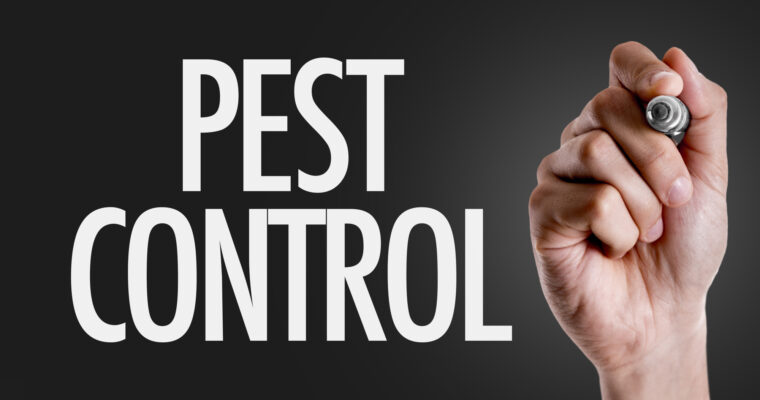4 Pest Control Techniques You’ve Never Heard of
In 2019, experts valued the global pesticides market at almost $84.5 billion. Come 2023, they project this to grow to a whopping $130.7 billion.
All those figures prove that pesticides are still the leading pest control method. That’s despite common pests, such as cockroaches, developing insecticide resistance. Yes, you read that correctly, cockroaches (the already hard-to-kill pest) are becoming invincible against many of the most common insecticides.
The good news is that other pest control solutions can be safer than chemical controls. Some of these pest repellent techniques use organic or naturally-occurring materials. There’s even one that relies on temperature!
To that end, we came up with this guide on the lesser-known yet effective pest control tactics you ought to try. Read on to discover how they work and what makes them effective.
1. Diatomaceous Earth
Diatomaceous earth (DE) consists of fossilized diatoms, which are tiny aquatic organisms. Diatoms have skeletons made of silica, a natural substance that acts as a desiccant. Desiccants are substances that absorb water, so they cause dehydration in some pests.
DE absorbs not only water, though, but also the fats and oils in the exoskeleton of insects. The pests don’t have to eat DE; this organic pest control material works by sustained contact. The longer the pests crawl over the white powder, the more effective it can be in drying their bodies out.
According to researchers, diatomaceous earth can be effective for German cockroaches. These roaches are among the most prevalent in the US, second only to the American roach.
Other pests that DE may be useful for are lice, fleas, ants, slugs, bed bugs, and ticks. It’s also a safe pest repellent on pets, as it is non-toxic to other animals.
2. Neem Oil
Neem oil is a natural substance extracted from the neem tree, mainly from the seeds. The neem tree itself belongs to the mahogany family and grows throughout South Asia.
Neem oil harbors over 100 active biological compounds. Of these, a chemical called azadirachtin seems to have the most effect on pests. Studies have found that it can inhibit pest feeding and affect the growth of young pests.
For example, neem oil may work as a growth hormone regulator. It can quell fertility, impair molting, or alter the reproduction of certain pests. These include some species of mosquitoes, moths, and even ticks, to name a few.
What’s even better is that neem oil poses little toxicity risks to humans. It can even benefit plants as it can work as a fertilizer.
So, not only is neem oil an eco-friendly pest control product, but it can also help make your plants healthier.
3. Thermal Remediation
Thermal remediation is a method that uses heat to destroy pests like bed bugs and fleas. Also known as heat treatment, it uses only temperature and no chemicals. It relies on the use of special thermal machines to raise the temperature inside a room.
Scientific studies back up the effectiveness of heat treatment for bed bug control. Researchers found that temperatures ranging from 119 °F to 131 °F can kill both adult bed bugs and eggs.
Fleas die at 100 °F, so if you also have these pests at home, bed bug heat treatment will kill them too.
Heat treatment doesn’t use chemicals, but it’s still something you should hire a pro for. It can be a safety risk if done by an amateur as it relies on sustained high temperatures.
4. Integrated Pest Management (IPM)
According to some experts, at least 500 pest species have developed pesticide resistance. From termites to bed bugs, roaches, and mice, these species can now survive a pesticide attack.
For that reason, Pest Control Experts now promote the use of Integrated Pest Management techniques. IPM is a mix of biological, cultural, mechanical/physical, and chemical controls.
Biological Control
Almost all living things have a natural enemy, such as in the case of prey and predators. This is the idea behind biological pest control; it uses other organisms to control pests. It takes advantage of the pest-damaging effects of parasites, pathogens, and predators.
For example, ladybugs are helpful to humans as they eat many other pests that destroy crops. Spiders also feed mostly on insects, including household pests like mosquitoes.
Biological pest control is more eco-friendly and safer for humans than pesticides. However, it’s a method best left in the hands of pros, as it does involve handling other organisms.
Cultural Controls
Cultural controls are practices aimed to reduce pest establishment, spread, and survival.
One example is the use of proper irrigation practices to prevent excessive watering. Watering your plants too much can kill them and also attract moisture-loving pests. The excess water can pool up and invite mosquitoes and other bugs.
Mechanical and Physical Controls
Mechanical and physical controls use devices or materials with direct action against pests. For instance, using window screens can keep bugs out of your home. You can also patch up gaps and leaks with caulking, sealants, and weather-strippers.
Another example is the correct use of traps with ultrasonic pest repellents. Proper placement of the traps and baits is crucial to entrapping them in the first place. You can also check out this helpful review to learn more about these products.
Chemical Control
Chemical control methods utilize pesticides. However, IPM professionals use this as their very last resort and only as needed. If they need to use pesticides, they will always use them with other pest term control methods.
Give These Lower-Risk Pest Control Methods a Shot
As you can see, pesticides are no longer the only nor the best pest control method. If you don’t have a full-blown infestation yet, consider using DE, neem oil, or both. If you have a severe pest problem, though, it’s best to go with a pro for heat treatment or IPM services.
Interested in more insider scoops on home and real-estate? Then please feel free to check out our guides for more tidbits of wisdom!






